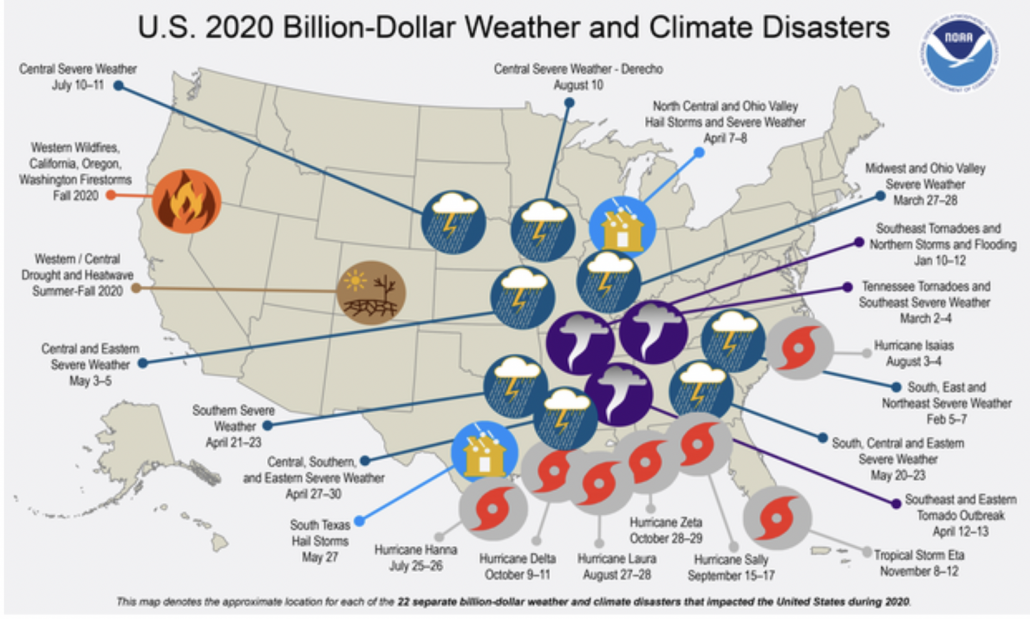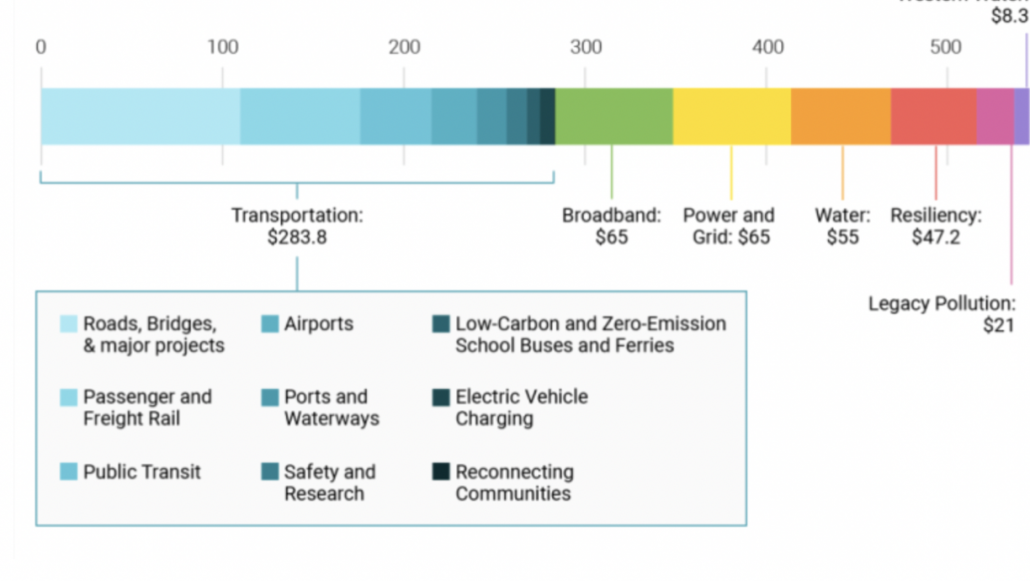The New Infrastructure Bill
The new infrastructure package recently set aside 1.2 trillion dollars for various infrastructure changes across the energy and transportation sectors. This includes funds towards expanding the grid and energy infrastructure to help bring clean energy to more households across the US – something we are excited about at SGE! Additionally the bill focuses on reducing greenhouse gas emissions, and building new infrastructure that will be resilient to climate change. If you are interested in the different aspects of this bill and how they relate to climate change based on information from the White House, keep reading!
And if you are wondering why we need this infrastructure bill – check out this graphic provided by the NOAA. It depicts the 28 climate disasters that occurred just last year, which in total cost the US $95 billion dollars (not to mention the countless deaths and destruction that they caused as well).
Climate Resilience
One of the main ways that this bill supports climate resilience is through supporting electric vehicles. The bill set aside $7.5 billion for improving the status of EV charging stations. Specifically, to locate them on highways to facilitate driving longer distances in EVs. One of the main problems with EVs currently is that customers think they are unreliable since they can only charge the vehicles at home. But, this new investment is looking to change that and encourage customers to utilize their EVs more often, and for longer trios. School buses, ferries, and other public transportation have also received investments to be electrified in order to reduce their emissions.
Flooding and other water issues are a direct result of climate change. The bill includes investment in emergency measures and relocation in preparation for more flooding events. It also sets aside money for prevention measures, such as weather modeling and predictions by the NOAA, and programs that will help people make their homes more resistant to wildfires caused by climate change. Both these programs and the relocation funds are directed at those who are disproportionately affected by climate change, such as indigenous or low-income populations.
Renewables
Lastly, the bill invests $65 billion in clean energy transmission! This is the largest clean energy investment ever (in America). The bill puts this money towards building new transmission lines, which should help increase the supply of renewables and lower the cost. Good news for solar power!
The Transportation Sector
A significant chunk of funding (283 billion dollars) was invested in the transportation sector. First, the bill focuses on rebuilding bridges. Many of the bridges in the US are in need of repair (an estimated 45,000 bridges!). When these bridges are rebuilt, they will be constructed to be both more environmentally friendly and climate resilient.
The bill also invested $66 billion in railroads, since public transportation is an overlooked way to reduce greenhouse gas emissions. Better train systems across the country could reduce greenhouse gas emissions from cars and planes. These new railways will be more efficient and climate conscious than current ones.
Internet Access
The last large piece of funding is going towards broadband internet access. This investment will facilitate getting reliable internet access for all Americans, including those in more rural areas. Hopefully, this will decrease the price of the internet and help more Americans be able to afford it.
Overall, this is a very progressive bill that will affect many different sectors, and aims to make America more environmentally friendly and climate resilient!
Below is a graphic showing the funding of the bill and how it is split up across sectors.




